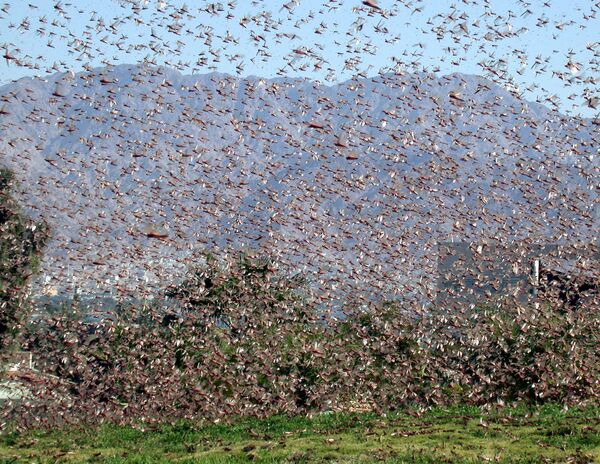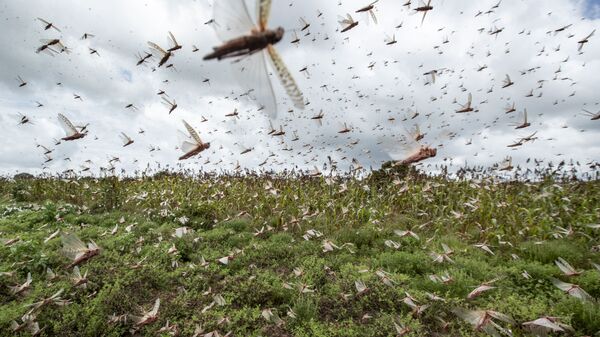The most devastating plague of locusts in over 30 years is about to hit Africa and the Middle East, according to Rome-based Senior Locust Forecasting Officer Keith Cressman.
The officer, who is employed by Locust Watch, a division of the United Nation’s Food and Agriculture Organization, on Monday cited the organization’s most recent report forecasting that new “extremely alarming” swarms of the insects were forming in the Horn of Africa.
The current widespread breeding in Kenya, Ethiopia, and Somalia represents “an unprecedented threat to food security and livelihoods at the beginning of the upcoming cropping season,” writes the Locust Watch website.
The Rome-based officer was cited by The Times of Israel as admitting the last time the region faced such a threat was during the locust plague of 1987-1989.
“Starting in early 2020, the global Desert Locust situation deteriorated, as favorable climatic conditions allowed widespread breeding of the pest in East Africa, Southwest Asia, and the area around the Red Sea,” writes the website, pinpointing Kenya, Ethiopia, Somalia, Iran, Pakistan, and Sudan as the hardest hit countries.
Not all regions of the Middle East will be affected, however, confirmed Cressman, with the swarms set to bypass Israel.
Locust Watch works in collaboration with affected countries to assess field data, information and reports in real time, said Cressman, adding this is subsequently “combined with analysis of remote sensing (satellite) imagery, weather data and forecasts, and historical data in our geographic information system and database that go back to the 1930s.”

Adding to the impending concerns of the organization, which is tasked with giving emergency assistance to countries struggling with the impact of desert locust invasions, is the current coronavirus pandemic.
The officer lamented the spreading COVID-19 and resulting bans on travel introduced by countries on lockdown as hampering efforts of international experts to deal with the crisis situation in affected areas.
“It is always very difficult to find and treat all infestations, and this is the nature and challenge of managing Desert Locust,” he said.
Voracious Eater
The Desert Locust (Schistocerca gregaria) “is the most destructive migratory pest in the world,” according to the Locust Watch website.
When the highly mobile swarms of Desert Locusts form, “they are ravenous eaters who consume their own weight per day, targeting food crops and forage,” with swarms swelling to millions of individuals “with the capacity to consume the same amount of food in one day as 35,000 people.”
Cressman said that the desert locusts have “overwhelmed their natural predators” - which include birds and desert foxes.
Currently, hundreds of billions of locusts are swarming through parts of East Africa and South Asia, threatening crops and livelihoods as states are resorting to aerial and ground spraying as the most effective strategies.
Ethiopia 🦗
— ICRC (@ICRC) February 27, 2020
Kenya 🦗
Somalia 🦗
South Sudan 🦗
Uganda 🦗
This is East Africa's worst outbreak of desert locusts for decades.
Why is it happening? pic.twitter.com/G0P1QcBYv1
Shortage of pesticides in Kenya, however, has hampered efforts to contain the insects, while Ethiopia lacks planes to spray crops.



